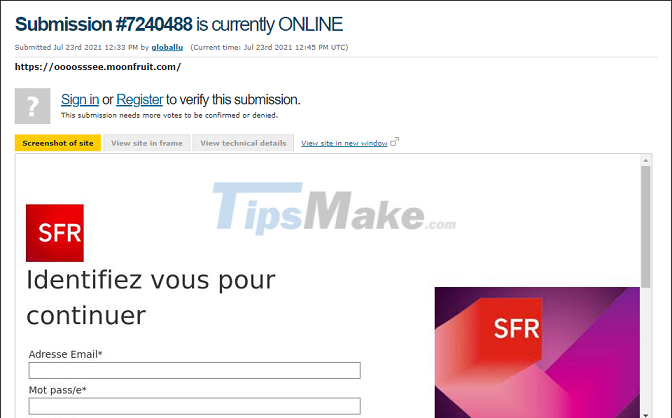How to check if a URL is safe?
If you feel a link is suspicious, check it out now!
1. Using Norton Safe Web
Norton Web Safe analyzes links to detect any security issues, and how it affects you.
Step 1: Visit the Norton Safe Web website.
Step 2: Paste the link you need to check into the search bar and then press Enter.
Norton Safe Web will give the results in a few seconds.
Thus, the link has gone through Norton Safe Web's check and received an OK - Safe result. In addition, you may also get results such as Red - Not Safe, and Orange - Attention.
If a link is rated Orange, it means the site is potentially threatening, but not enough to be considered dangerous. At that time, you can still open the link, but should be careful with the content inside.
Safe Web will provide you with information about the security issues it detects, so you can make timely decisions about whether to access it or not. Safe Web also displays community reviews of the site, which you can reference from them.
2. Google Site Status
By browsing the web through a robot, Google continuously and automatically searches for danger across the entire Internet. The Site Status feature is a means for you to check the safety of a page.
Type the link you want to check in the box and press Enter.
Google will return results related to the state of the page, which is where you'll find hazards, as well as when it was last updated. If the tool detects one of the web is not secure, it will display a warning and detail the danger.
3. PhishTank
PhishTank is a very good measure in detecting signs of fraud.
When you enter a URL that you suspect contains phishing activity, PhishTank will check it. If the link is already in the database, it is a bad link. The data you receive includes screenshots of the page, domain registration information, etc.

Of course, checking for phishing links is not as simple as detecting malware. So you may not get the results you want. But you can also add a website to the tank so that it is responsive after testing.
There are many sites that are not included in Phishtank's index. Phishtank contains only bad pages, it does not save good pages, because they have not been reported by users as 'bad'.
4. VirusTotal
A cross-browser scanning tool, VirusTotal analyzes suspicious files and Urls for malware. The scan results are then shared with the cybersecurity community.
When accessing the website, you first need to switch to the URL section.
Enter the link in the box and click Search.
The tool will give you instant results, if the detections in the Detection section are marked green - Clean, it means the site is safe, no malware detected.
Conclude
Above are 4 websites equivalent to 4 simple ways to check a URL is safe to visit or not. If you suspect a link, don't hesitate to 'check it' right away!
You should read it
- How to scan virus files downloaded on Chrome
- Check the safety of files from Windows 10 desktop easily with VirusTotal X
- How to scan virus files ZIP, RAR with ZipeZip
- How to scan downloaded files on Firefox
- 3 ways to identify a Mac infected with a virus
- Use EtreCheck to scan, check for errors on your Mac
- How to Check a Download for Viruses
- How to know for sure a safe file before downloading?
- How to fix Facebook catch virus scan, tell the computer to be infected with malware
- How to check Facebook user information and activities
- How to use AI Writing Check to check text generated by AI
- 3 ways to check if anti-virus software on PC is working?
